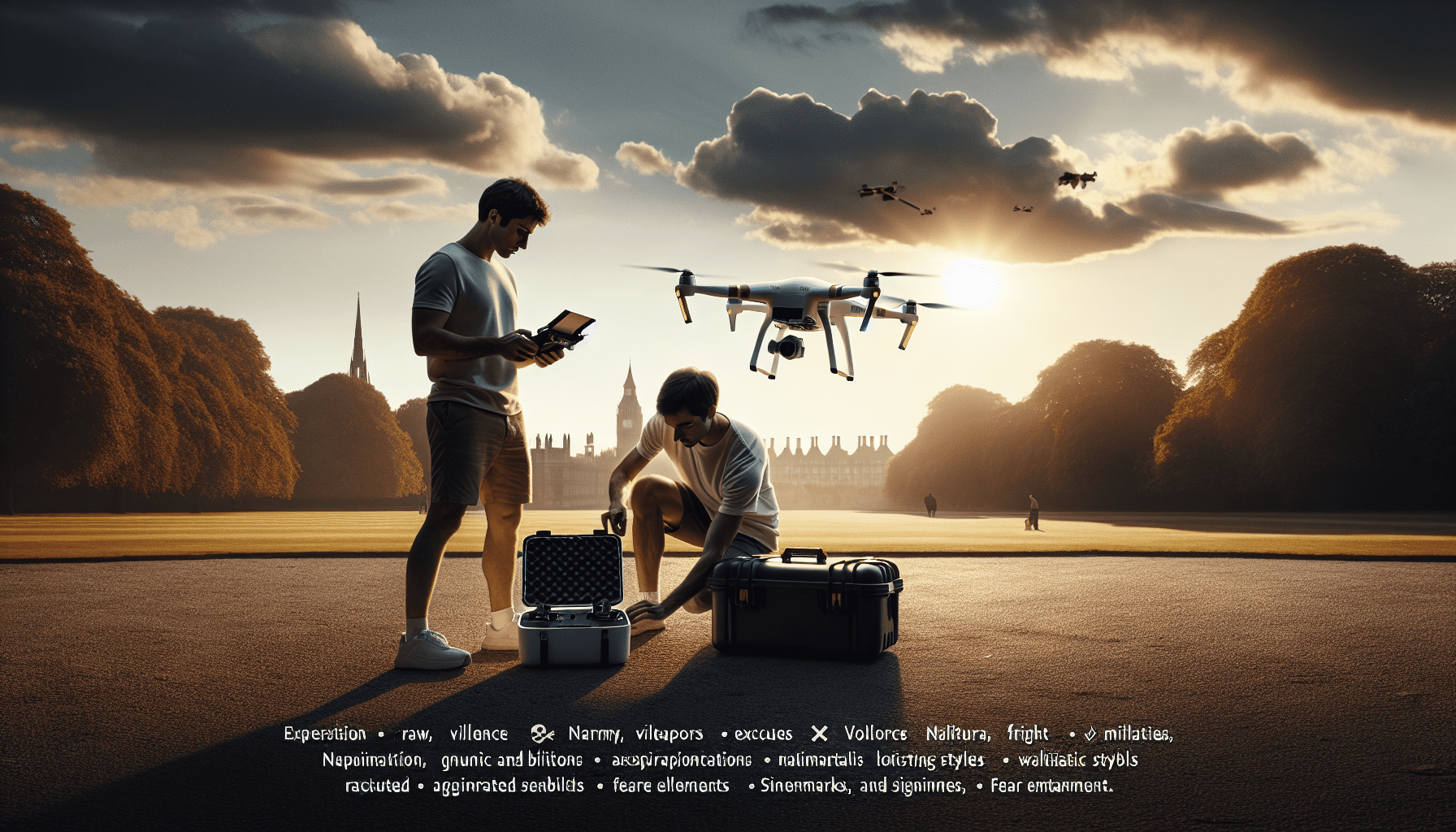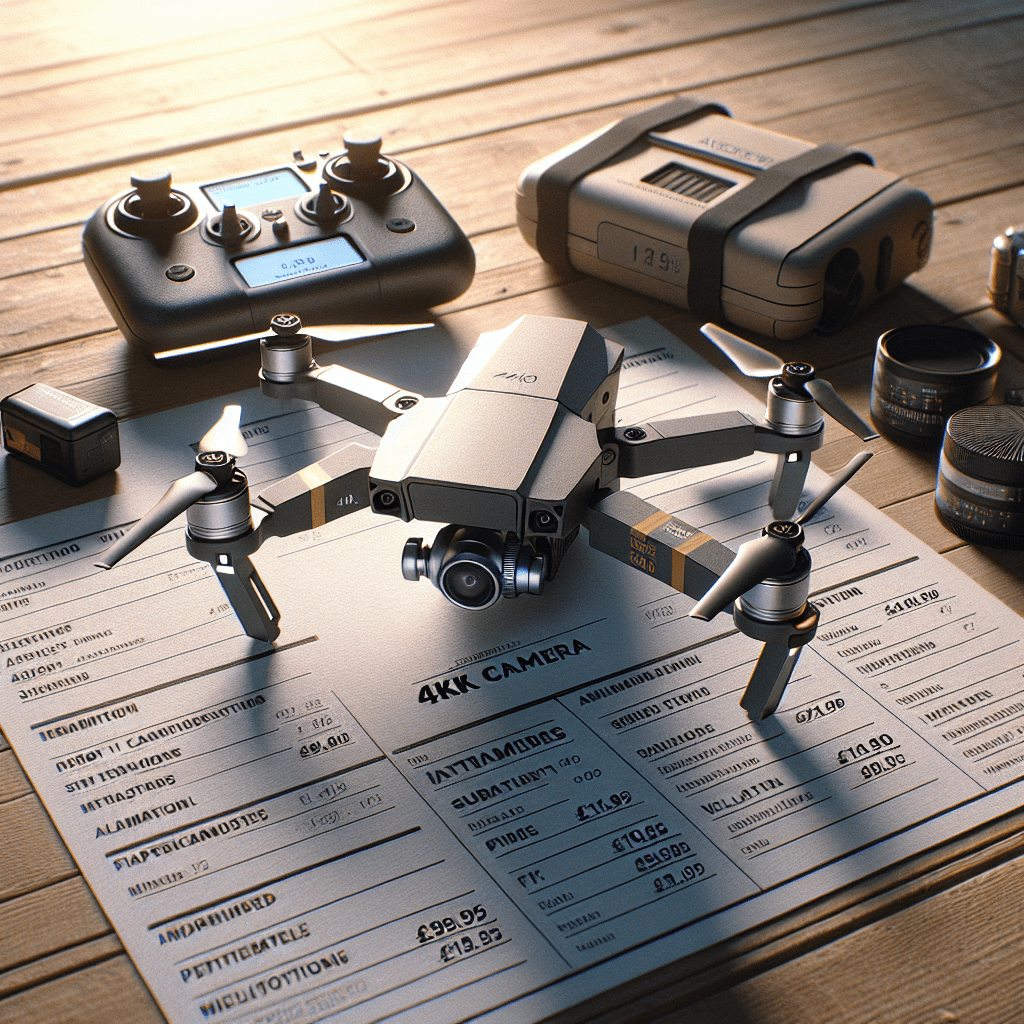Aero 1 Lite vs Aero 3 Lite: Best Value Drone Comparison UK
In This Article
- Aero 1 Lite is the most affordable and beginner-friendly choice at £49.95.
- The Aero 3 Lite justifies its higher price with superior camera and flight stability.
- For entry-level practice, Aero 1 Lite is easier and quicker to set up and fly.
- Users seeking better visuals and longer flights should opt for Aero 3 Lite’s 4K camera and longer battery.
- Aero 1 Lite is ideal to learn fundamentals without financial risk.
- Long-term drone enthusiasts may grow out of Aero 1 Lite faster.
Why Compare Aero 1 Lite and Aero 3 Lite?
Understanding beginner drone needs
Conducting an in-depth aero 1 lite review is not merely about dissecting drone specifications—it’s about interpreting what first-time flyers truly need. Aspiring drone users often seek a harmonious blend of simplicity, affordability, and performance. The Aero 1 Lite and Aero 3 Lite are two popular entry-level drones marketed precisely to cater to such users. However, are they equal in value, or does one model clearly outshine the other in terms of long-term practicality?
The Aero 1 Lite attracts new hobbyists due to its ultra-approachable price and minimalist engineering. It promises core flight features without the bells and whistles. Meanwhile, the Aero 3 Lite, while more expensive, arrives with additional technology including enhanced video capture, stabilisation, and upgraded flight control mechanics. Both models come from trusted manufacturers but deliver different experiences. This comparison, focused through the lens of an aero 1 lite review, attempts to clarify which unit better fulfils the needs of a beginner without burdening them with over-complexity or overspend.

Price Breakdown for Budget Flyers
What you get at £49.95 vs £114.95
For budding aerial photographers and drone enthusiasts on a tight budget, pricing is usually the deciding factor. The Aero 1 Lite enters the market at an eye-watering affordable rate of just £49.95. But don’t let the low price tag lead you to underestimate its capabilities. Despite its budget classification, it delivers a stable flight experience, intuitive control setup, and basic video recording capability—excellent attributes for any beginner nonspecialist.
Contrast that with the Aero 3 Lite, which retails at a significantly steeper £114.95. For more than double the investment, you receive upgrades such as a 4K-capable camera, enhanced obstacle avoidance sensors, and a slightly more robust build. It’s clear that Aero 3 Lite targets more serious users—those who appreciate a bit more tech under their wings and aren’t afraid to pay for it. However, if your primary goal is to learn the fundamentals of drone piloting without shelling out premium prices, then the Aero 1 Lite remains incredibly appealing. Its affordable pricing lowers the entry barrier and makes drone flying more accessible to all. Learn more about Best value drones for beginners in the UK
Camera Quality Showdown
Is 4K worth it for beginners?
The Aero 1 Lite comes equipped with a modest 720p HD camera—the bare minimum in today’s image-conscious world. While impressive for casual navigation and low-res social sharing, it doesn’t deliver the vibrancy or colour resolution modern users often expect. That said, for someone taking their very first aerial shots, it’s more than serviceable. Drone rookies can still capture footage of passerines overhead or wide, scenic skylines without complicated settings or editing disciplines.
On the other end, the Aero 3 Lite boasts a 4K ultra-HD camera with digital stabilisation, offering film-like motion capture that looks at home in professional presentations. This camera quality may seem overkill for beginners, but if your ambitions stretch toward semi-professional drone content creation, this alone becomes a major selling point. The leap from 720p to 4K isn’t merely about resolution—it’s about detail fidelity and future-proofing your investment. If camera performance ranks high in your drone checklist, the Aero 3 Lite’s value proposition becomes considerably more compelling. Price and value differences explained
Battery Life and Flight Times
Aero 1 Lite vs Aero 3 Lite endurance test
Battery life is another keystone concern when evaluating drones, particularly through the lens of an aero 1 lite review. Aero 1 Lite offers a flight time of approximately 10 minutes per full charge, depending on environmental conditions. While this might seem short, the majority of budget drones fall within this same operational window. Given the compact cell powering the device and its basic functionality, this performance remains quite acceptable.
The Aero 3 Lite, however, impresses with an average flight time ranging from 15 to 17 minutes. This improvement is partly due to a larger battery capacity and more efficient flight algorithms that manage power consumption better. In practice, this means users can enjoy longer video shoots, scout extended areas, or simply get more playtime between recharges. It does add convenience and lessens downtime, which can be a delight, especially when out on location.
Ease of Use and Stability
How each drone performs in real beginner hands
The Aero 1 Lite was clearly designed with simplicity in mind. It features one-button takeoff and landing, auto-hover capabilities, and touch-responsive navigation via smartphone. Beginners can unbox and fly in minutes, with little to no training or calibration required. Its light weight does introduce some flight instability in windy conditions, but under calm skies, its performance is remarkably smooth for its size and cost.
Contrastingly, the Aero 3 Lite features built-in gyroscopic stabilisation, altitude lock, and GPS assistance—all features inviting to both beginners and intermediate users. These enhancements make a noticeable difference when navigating complex terrains or filming panning shots. The Aero 3 Lite practically flies itself in beginner mode, giving users confidence without removing their control. It’s an invaluable learning assistant disguised as a higher-end drone.
Design and Build Comparisons
Looks, feel, and durability
Aesthetically, the Aero 1 Lite feels and looks every bit the device it is: functional, minimalistic, and ultra-portable. Its plastic housing keeps things light but sacrifices durability. Casual knocks or minor crashes may lead to damage quicker than with more premium drones. For younger users or spontaneous excursions, however, the lightweight construction is a distinct advantage—it travels easily and doesn’t fatigue the operator.
The Aero 3 Lite, in contrast, presents a more refined chassis: sleeker lines, reinforced struts, and anti-scratch coating. It has a reassuring heft, signifying higher craftsmanship. The materials feel denser, and the folding arms lock with firmer tension. For frequent users or those particularly fussy about gear aesthetic and longevity, the Aero 3 Lite wins hands down here. That said, discerning beginners may not prioritise these details early on, making the Aero 1 Lite’s basic design totally serviceable.
Use Case: First-Time Flyers
Which drone suits absolute beginners more?
For absolute newcomers, the Aero 1 Lite remains an unbeatable value proposition. It strips away complexity and presents only the necessary tools to begin one’s piloting journey. Its controls are simple, the app interface is free of clutter, and most notably, new users feel encouraged rather than intimidated. Additionally, with a lower price, the risk of damage or loss doesn’t carry extreme consequences, making it perfect for experimenting and learning on the fly.
The Aero 3 Lite, although beginner-compatible, edges into the upper echelons of beginner tech. It is more fully featured—perhaps convoluted for some first-timers. Those ready to invest slightly more into their hobby may benefit greatly from its advanced features as they learn. However, it’s important to ask: do you truly need them from day one? Often, beginners just want to get in the air without battling control schemes, firmware updates, or unexpected learning curves. For this, the Aero 1 Lite shines. Read a related article
Long-Term Value of Each Model
Will you grow out of the Aero 1 Lite?
This is an essential question in any aero 1 lite review. The Aero 1 Lite is clearly an entry-level model, and users who evolve their skills fast may quickly notice its limitations. The camera won’t satisfy forever, and the lack of flight modes or diagnostics feedback becomes restrictive as ambitions rise. That said, the low cost and easy learning make it the perfect stepping stone into the drone world. Once you outgrow it, transitioning to higher-end models becomes a logical next step.
The Aero 3 Lite, on the other hand, has greater longevity built into its architecture. Intermediate users will appreciate the variable speed controls and camera adjustments. Although initially overkill, these features mean you’ll likely keep the Aero 3 Lite around even as you become more proficient, potentially saving on repeat gear purchases. It’s an investment in the future as much as the present.
Feature Value Ratio Analysis
Getting the most tech for your pound
From a pure feature-to-price ratio, the Aero 1 Lite arguably leads the value race. For under £50, you gain a fully flyable, camera-equipped drone that teaches you essential navigational and orientation skills. It proves that entry-level doesn’t need to be featureless. The ROI here is extremely high, especially for those uncertain they’ll delve deeply into drone aviation long term.
The Aero 3 Lite, while more costly, delivers a future-proof suite of enhancements compatible with long-term hobbyist or semi-professional ambitions. If evaluating the pound-for-pound functionality—battery longevity, stabilisation, and camera clarity—it surely offers enhanced value per additional penny spent. It’s less about initial learning and more about growth capacity. How digital strategies affect tech choices
“If you’re just starting out, the Aero 1 Lite is your launchpad. When you’re ready to soar, the Aero 3 Lite will take you further.”
Final Verdict: Which Drone Wins?
In final deliberation, choosing between the Aero 1 Lite and Aero 3 Lite boils down to technical comfort, budget, and future vision. This aero 1 lite review showcases the Aero 1 Lite as the ideal companion for raw beginners—those who need a simplified but rewarding introduction to drone flying. Its ease of use, affordability, and low-risk learning path make it the rightful champion of accessibility.
Conversely, those with a little extra to invest and deeper ambition will find the Aero 3 Lite better suited to long-term needs. The enhanced camera, improved battery life, and refined control systems cater well to users progressing beyond basics. Ultimately, both models perform strongly for their intended users. Choose the Aero 1 Lite to begin your journey—and consider the Aero 3 Lite as your upgrade once you’ve mastered the skies.
Great guide on value-comparison-aero-1-lite-vs-aero-3-lite-interactive – Community Feedback
What are the main differences between Aero 1 Lite and Aero 3 Lite?
The Aero 1 Lite is more affordable, ideal for basic flying and learning, while Aero 3 Lite offers upgraded features, longer battery life and a 4K camera—suitable for more advanced beginners who want better performance and footage.
Which beginner drone is best value for money?
If you want simple, low-cost fun, Aero 1 Lite offers excellent value. If camera quality and longer flight time matter, spending more on Aero 3 Lite provides greater long-term satisfaction.
Is Aero 3 Lite worth the higher price over Aero 1 Lite?
Yes, if you plan to progress with your drone flying or value advanced features, Aero 3 Lite’s higher price is justified for its superior camera, flight stability, and extendable experience.

